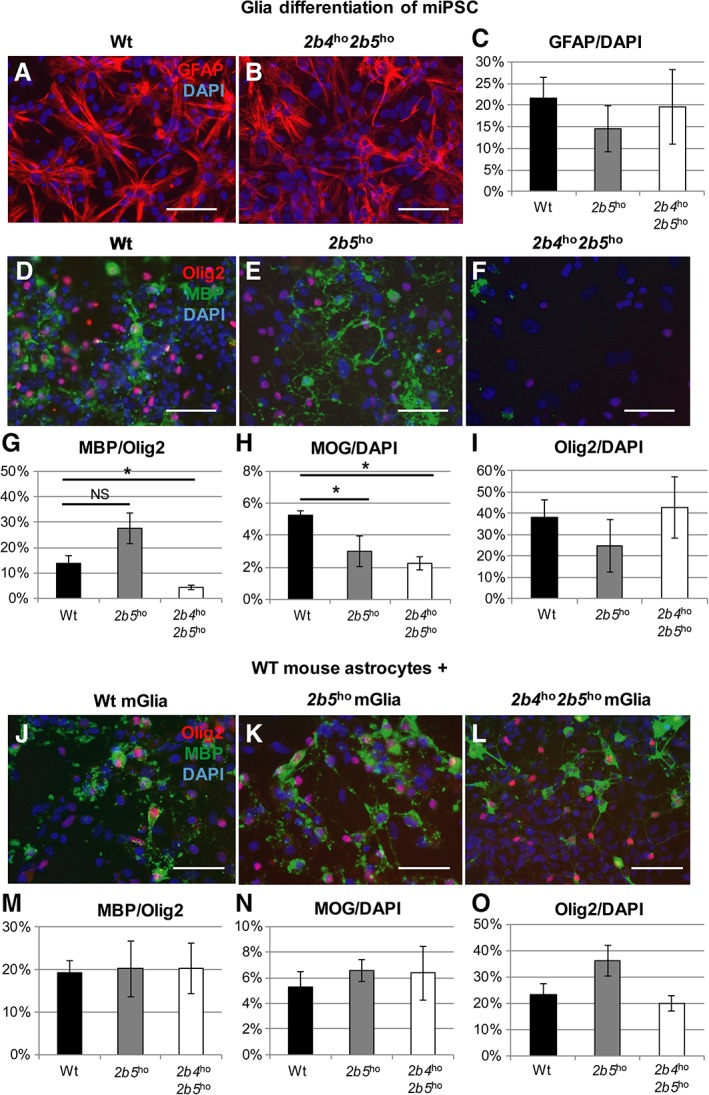Figure 2.

Wild‐type (wt) astrocytes rescue the maturation defect of vanishing white matter (VWM) mouse induced pluripotent stem cell (miPSC)‐derived oligodendrocytes. (A–C) Glial differentiation contained glial fibrillary acidic protein (GFAP)‐positive astrocytes, as shown by immunocytochemistry (A, B) and quantification (C). (D–I) Oligodendrocyte maturation was addressed in wt, 2b5 ho, and 2b4 ho 2b5 ho glia by immunostaining for myelin basic protein (MBP), myelin oligodendrocyte glycoprotein (MOG), and Olig2. Cell counts confirmed the decrease in the number of MBP‐positive (G) and MOG‐positive cells (H) in VWM without a decrease in the number of Olig2+ cells (I). Percentages of positive cells compared to the number of Olig2‐positive cells are shown for MBP; H and I show the percentage of total number of 4,6‐diamidino‐2‐phenylindole (DAPI)‐positive cells (wt, n = 3; 2b5 ho, n = 3; 2b4 ho 2b5 ho, n = 3). (J–O) To investigate the effect of healthy astrocytes on the oligodendrocyte precursor cell maturation defect, wt, 2b5 ho, and 2b4 ho 2b5 ho glia were grown on a monolayer of wt primary mouse astrocytes, and oligodendrocyte maturation was assessed using an immunostaining for MBP, MOG and Olig2. The oligodendrocyte maturation was no longer reduced in VWM cultures, as demonstrated by the absence of significant differences in the MBP/Olig2 (M) and MOG/DAPI (N) ratios between wt, 2b5 ho, and 2b4 ho 2b5 ho cultures. The Olig2/DAPI ratio was slightly, but not significantly, increased in 2b5 ho cultures (O; wt, n = 3; 2b5 ho, n = 3; 2b4 ho 2b5 ho, n = 4). Scale bars = 50μM. *Significant at p < 0.05. Bars in C, G–I, M–O represent mean ± standard error of the mean. NS = not significant.
